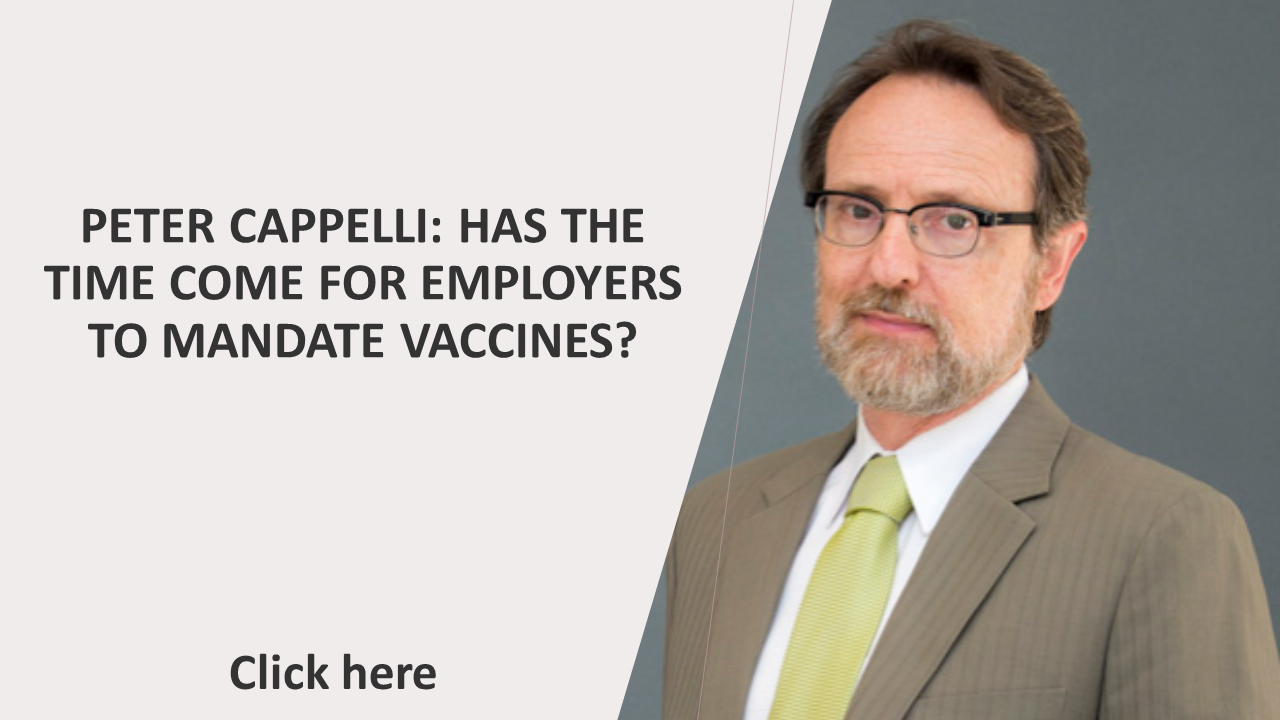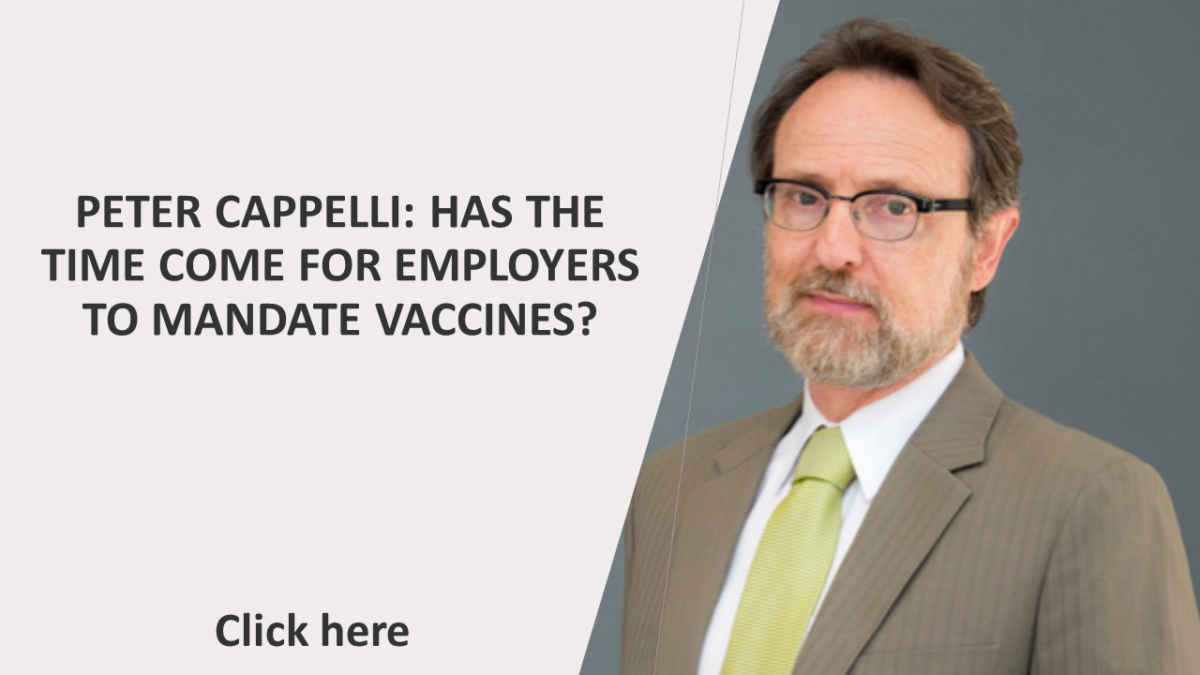The Supreme Court on Thursday blocked the Biden administration’s vaccine mandate for employers, which required businesses with 100 or more employees to implement a COVID-19 vaccination requirement for their workers and offer a weekly testing alternative for those who refuse or are unable to receive a vaccine. (The Court did, however, allow for the Medicare and Medicaid Services rule, which requires vaccination of all healthcare workers at CMS-covered facilities throughout the United States.)
The Supreme Court’s decision has far-reaching implications for employers nationwide. Here is what the experts say about seven major implications of the ruling.
It doesn’t preclude employers from making their own decisions about vaccine mandates. Although the Supreme Court stayed the federal government’s Occupational Safety and Health Administration rule, “the ruling has no bearing on whether an individual employer can impose a vaccine mandate on its workforce,” says Kathryn Bakich, health compliance practice leader and SVP at employee benefits consulting firm Segal. “Employers shouldn’t read into the decision a lack of support for vaccines, workplace vaccine requirements or meaningful public health measures.”
In fact, scores of research find that a number of employers have already put vaccine mandates in place for employees. “Many employers had already put mandates in place, and we believe many will continue to do so where permitted,” says Dr. Jeff Levin-Scherz, population health leader at consulting firm Willis Towers Watson.
Uncertainty is over—kind of. The Supreme Court ruling follows months of back-and-forth regarding the Biden administration’s rule. Shortly after OSHA issued the private-employer rules in November, the 5th U.S. Circuit Court of Appeals put the policy for large companies on hold nationwide. But weeks later, the 6th Circuit reinstated it after hearing a consolidated case that linked all the related challenges. The Supreme Court agreed to consider the vaccine mandate for large companies after several groups appealed the 6th Circuit’s decision.
The decision gives much-needed clarity to employers regarding the rule, but it also puts the onus about vaccine decisions back onto them.
 There are still patchwork laws surrounding vaccine mandates. The ruling makes no difference for certain cities and states that have already made their own decisions on vaccine requirements. For instance, New York City has a mandatory vaccination policy, while Florida law prohibits such policies. This will largely cause more confusion for employers and prevent a uniform approach, experts say. “The significant impact, it seems, will be the inevitable patchwork of local laws either requiring or prohibiting mandatory vaccination policies,” says Randi May, partner at law firm Hoguet Newman Regal & Kenney LLP. “This will lead to practical difficulty for employers with workplaces in multiple jurisdictions.”
There are still patchwork laws surrounding vaccine mandates. The ruling makes no difference for certain cities and states that have already made their own decisions on vaccine requirements. For instance, New York City has a mandatory vaccination policy, while Florida law prohibits such policies. This will largely cause more confusion for employers and prevent a uniform approach, experts say. “The significant impact, it seems, will be the inevitable patchwork of local laws either requiring or prohibiting mandatory vaccination policies,” says Randi May, partner at law firm Hoguet Newman Regal & Kenney LLP. “This will lead to practical difficulty for employers with workplaces in multiple jurisdictions.”
Reactions are mixed from employers. While some employers are happy to have the administrative burden removed as a result of the ruling, other employers are disappointed, says Carol Morrison, senior research analyst at the Institute for Corporate Productivity (i4cp). “Had the Supreme Court upheld the OSHA vaccine-or-test mandate for large employers, we’d probably have heard a collective sigh of gratitude—from some business leaders anyway,” she says. “Late last year, nearly one in five executives polled by i4cp said that the mandate [just announced at that time] was actually a relief for them because they’d wanted to require employees to be vaccinated but struggled with the decision. Now, leaders who don’t want to make the decision themselves may have to wait for guidance from state and local authorities.”
The ruling has a big impact on the job market. Many employers have been hesitant about implementing vaccine mandates over concerns they may lose unvaccinated employees in a hot job market and decided to instead rely on federal mandates in making their decision. Other employers believed mandating vaccines could be helpful to retain and recruit vaccinated employees. Now things are up in the air.
“This ruling has significant impact on the job market, as it’s no longer an even playing field among large employers in terms of recruitment,” says David Gordon, an employment litigation partner at law firm Mitchell Silberberg & Knupp. “Now, if a large employer believes that it would be advantageous not to require employees to be vaccinated, it will be free not to adopt a vaccine mandate if permissible where they are located.”
Conversely, some employers may decide to implement mandates if employee demand for workplace safety is high.
Related: Is your talent really walking out the door to avoid a COVID vaccine?
 Health threats still loom, making employer action vital. An important thing to note, experts say: The health threats posed by COVID-19 are still in full force. “Medical experts advise that they won’t go away unless higher numbers of people are vaccinated,” i4cp’s Morrison says. “Ongoing surges and variants make that clear, and employers still must address very practical safety concerns in company workplaces, whether or not they choose to require employee vaccinations.”
Health threats still loom, making employer action vital. An important thing to note, experts say: The health threats posed by COVID-19 are still in full force. “Medical experts advise that they won’t go away unless higher numbers of people are vaccinated,” i4cp’s Morrison says. “Ongoing surges and variants make that clear, and employers still must address very practical safety concerns in company workplaces, whether or not they choose to require employee vaccinations.”
Adds Levin-Scherz of Willis Towers Watson: “Vaccines help employers decrease the risk of infection at the workplace and the risk of workplace disruption, as those who are fully vaccinated are not just less likely to be infected, they also don’t need to quarantine if they are exposed at work or outside of work.”
Employers still have decisions to make about vaccine policies and other safety policies. Organizations certainly see pros and cons to requiring worker vaccination. On the con side: associated costs to employers in the form of administration, documentation, testing, potential fines, retention and more. On the pro side, mandates can help improve productivity and lower expenses associated with sick employees, retain vaccinated employees and help employers reopen offices. These considerations leave company and HR leaders with a lot to think about, especially as COVID-19 infections reach all-time highs.
“The bottom line is that business leaders are still left trying to balance what’s right for their individual organizations and what will work within the context of their company cultures to ensure continued operations and business performance, while also keeping employees safe and productive,” Morrison says.
